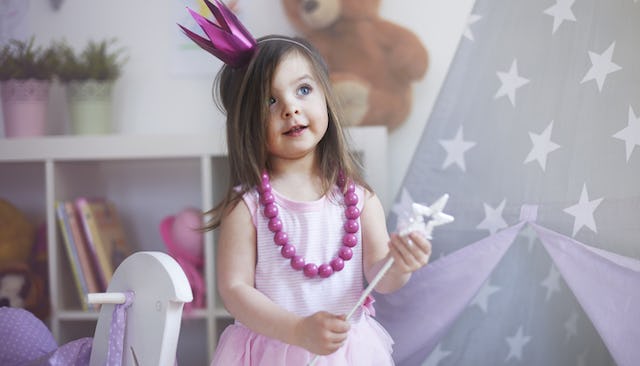Turns Out All That Princess Stuff Isn't Harmless

A study shows Disney princesses might be more harmful than most parents think
Disney princesses: love them or hate them, there’s no arguing against their staying power and incredible influence over little girls all over the world. But the troubling results of a recent study on “princess culture” have some parents worried that their daughter’s love of Belle and Snow White might be steering them in the wrong direction.
RELATED: 10 Best Disney Toys To Keep Kids Living Their Most Magical Lives Right At Home
Researchers at Brigham Young University (BYU) surveyed 198 preschoolers, and measured their time watching and playing with princess stuff, as well as interviewed their parents and teachers. They also had the kids rank their favorite toys from a varied collection of “girl” toys, “boy” toys, and gender-neutral options, like art supplies.
What they found is that preschoolers who engage with Disney princess culture are more susceptible to damaging female gender stereotypes. For boys, this meant they tended to feel better about themselves and were nicer and more helpful — as BYU News put it, “princesses provide a needed counterbalance to hyper-masculine superhero media.”
But for girls, more exposure to princesses meant more stereotypically “girly” behavior, a stronger desire to be perceived as feminine, and even some body image issues to boot. It might not mean much in small doses, but over time, lead researcher and BYU family life professor Sarah Coyne, says the damage can have lasting effects.
“We know that girls who strongly adhere to female gender stereotypes feel like they can’t do some things,” she told BYU News. “They’re not as confident that they can do well in math and science. They don’t like getting dirty, so they’re less likely to try and experiment with things… Disney Princesses [also] represent some of the first examples of exposure to the thin ideal.”
Not exactly great news for those of us with kids who love Disney princesses.
I grew up watching Disney movies, but as a mom, I have to admit I was about skeptical about introducing them to my kids. I’m the person who watches The Little Mermaid and thinks, how can Prince Eric fall in love with someone who doesn’t talk? Why is Ariel giving up her whole life and family for some dude? And, seriously, did they have to make those purple bikini shells so tiny?
As luck would have it, I gave birth to a girl who loves sparkles and fairytales and princesses, even without ever having watched the majority of princess movies. From a young age, she wanted to dress up and wear crowns, and it challenged my beliefs because I was so sure that allowing her to participate in princess culture would damage her exactly the way this study shows.
[shareable_quote]Princesses might introduce troubling stereotypes, but they also teach kids about bravery, having big dreams, and following your heart.[/shareable_quote]
What I’ve realized since then is that I simply have to be proactive about what my kids watch and play with. Princesses might introduce troubling stereotypes, but they also teach kids about bravery, having big dreams, and following your heart — especially when it comes to more modern characters like Rapunzel, Queen Elsa, and Merida.
I don’t want to ban princesses from my house and mistakenly show my kids that stereotypically feminine characters are “bad,” nor do I want to let them watch every single princess movie in existence totally unchecked. What this study really shows is that, as parents, we have to find balance. We have to expose our kids — both boys and girls — to more than just one kind of character, and we have to be willing to talk about the positives and negatives of everything, even characters they really like.
Disney princesses aren’t the devil incarnate, but they’re also not as harmless as we’d like to believe. We have to be aware of the media we’re consuming, and we have to figure out a way to teach our kids to do the same.
This article was originally published on